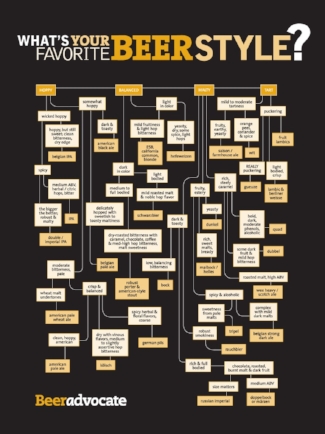How Many Beer Styles Are There?
How many beer styles are there?
This is a great question. Understanding the answer will go a long way in helping you find the beer you love most, making it easier to navigate the ever-expanding choices at the tap. Including all the major beer styles and all of their sub-styles (see below), there are believed to be over 100 different beer styles in the world.
All beer is either an Ale or a Lager
To begin, all beers are either ales or lagers, and that's determined by the type of yeast used during the fermentation process. (See our recent post Ale vs. Lager – What’s the Difference? for more information). Lagers are made with yeast that ferments at the bottom of the beer mixture and ales are made with yeast that ferments at the top. There are also spontaneously fermenting yeasts, which make wild or sour ales. Other factors that contribute to defining a beer style are: region of origin, ingredients, appearance and brewing method.
The BIG Styles
Ales tend to be more complex beers. They are often served at room temperature and contain a rich aroma and flavor. Examples include: Pale Ale, India Pale Ale (IPA), Brown Ale, Irish Beers, Scottish Style Ales, Bock, Porter and Stouts.
Lagers are clean, refreshing beers, typically with a light aroma and flavor and are usually served cold. These are the most common beers found in America and include the following styles: Dark Lagers, Wheat Beers and Pilsner.
And then there are are hybrid beer that are neither ales nor lagers. Ranging from creamy ales (dark) to kolsch (light), hybrids are a product of unique brewing methods and are increasing in number as craft brewers continue to experiment.
Once you know the difference between ales and lagers, choosing a beer that you will like becomes a little bit easier. However, within each style there are a number of varieties based on color, flavor and aroma. These sub-styles (see list below) create the great abundance of beer we see on tap.
So how many beer styles are there? A lot—and the number is increasing every day. This creates a wonderful problem: How do you choose a beer to drink?
The best approach is trial and error—sample, sample, sample. Try as many of these styles as you can. As you try new beer styles you will soon discover those you really like. You will eventually know with certainty the Big Style (ales or lagers) and the sub-style (porters, stouts, pilsners, IPAs, etc) you prefer. Perhaps you will discover that you love them all. But one thing is for sure—once you know, choosing new beers will be forever easier.
Cheers!


